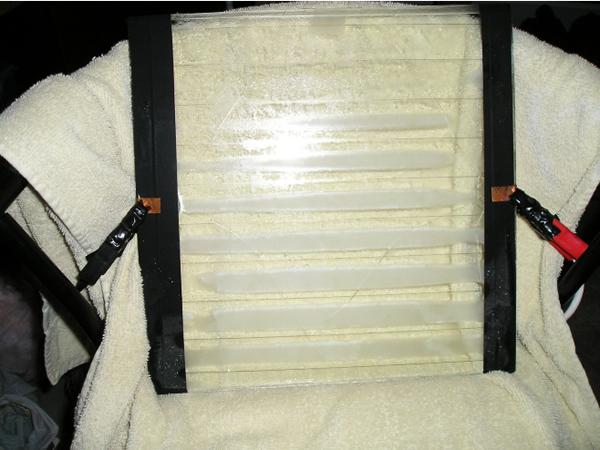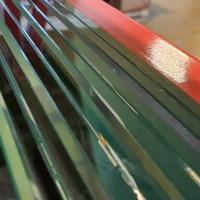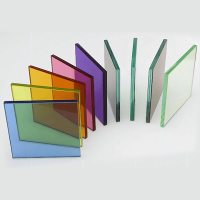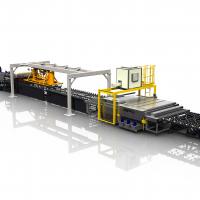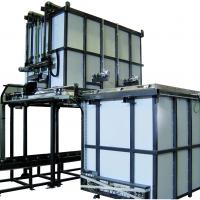THE NEED FOR A NEW PRODUCT STRATEGY
In 1967 when the heated back wind shields were launched the following conditions were in place:
- The price of silver was $3.00/oz. (Now about $40.00)
- The ceramic frit binding the silver was high in lead
- The volatile organic compounds emitted during the process was not yet an issue
- The electrical terminals were soldered with an alloy high in lead ( expensive indium replaces lead)
- Laminated back wind shields were offered only on high priced cars.
New Product Description
- Copper replaces % 83.0 of silver.
- Soldering electrical terminals and related use of indium is eliminated.
- PET film is the carrier of the heating elements.
- Fabrication process uses established production processes such as flexography roll to roll printing , nano silver material and roll to roll electroplating.
- Grid line width as low as 0.2mm is feasible.
HEATED GLASS CONSTRUCTION
- Heating grids and busbars are printed on a PET film using Nano silver as the bait layer.
- The electrical conductance of the grid is then built up to a required value with copper using an electroplating process.
- The PET is then included between two PVB films and this assembly is laminated between two glass panels.
- PET film is prepared with conductive grids and busbars as in (1) along with radio antenna if required
- An obscuration non-conductive black band along the edges is added as a second print.
- The heating grids are printed on a PET film as in (1) and this film is laminated to a glass panel with a PVB film on the grid side. This is applicable to heated/insulated glass units where the PET is on the inside facing a low-e coated surface.
.jpg)
Click to enlarge
UserFiles/foto1big(1).jpg

Click to enlarge
UserFiles/foto2(2).jpg

Click to enlarge
UserFiles/foto3(3).jpg
PROCESS STEPS
Step 1. The PET film is passed through a roll to roll Flexography or screen printing process where the required grid pattern is printed using Silver Nano particles in specially prepared water base.
Step 2. The PET film is then passed through a continuous Copper plating process. The thickness of the copper is controlled to provide the required electrical conductance of the grids.
Step 3. The templates are cut off from the continuous PET roll.
Step 4. The electrical contact tabs are located in place with a dab of conductive epoxy. The purpose of the epoxy is to keep the plasticizer from PVB seeping in between the tab and the busbar.
Step 5. The assembly is completed with the layers of PVB.
Step 6. The completed assembly is mated with the glass panels and autoclaved.
SEALED GRID HEATING SYSTEM
(THE THRE BASIC SYSTEMS DESCRIBED HERE)
- Heated/insulated glass units
- Electrically heated automotive windshields (windshield wiper rest area)
- Electrically heated laminated rear windshields

Click to enlarge
UserFiles/foto4(1).jpg
A full de-icing is preferred in the wiper rest area to prevent the blades from scraping over ice dams. For this reason the grids are placed 0.25” apart.
Grid width is kept at .005” for aesthetic reason.

Click to enlarge
UserFiles/foto5(1).jpg
The grids are kept apart by 1.25 to 1.5 inches to heat a large area with minimal energy. Partial clearing is still adequate for rear view.
.jpg)
Click to enlarge
UserFiles/tab1(3).jpg
.jpg)
Click to enlarge
UserFiles/tab2(4).jpg
CONCLUSIONS
- With the reduction in dependence on Silver metal, the heated windshield (wiper rest area) is now an economically feasible option.
- The laminated back windshield with it’s inherent advantages such as “break in” resistance, noise reduction, etc., is more attractive since the cost of silver has been minimized.
- A low cost option of heated/insulated windows is now available.
The author Prem Boaz
.jpg)
President of Glass Products Consulting LLC. Specialist in ceramic coatings on Automotive windows and other related issues as below: o Windshield retention to car body. o Ceramic-paint specifications and automotive requirements. o Decorative as well as functional applications o Ceramic material as well as application process ( Screen printing) Specialist in Electrically heatable windows and related issues as below o Conductive ceramic compositions o Screen print applications o Design to meet car requirements o Specifications and test methods o Terminal design and attachment techniques o Solder process specialist.


